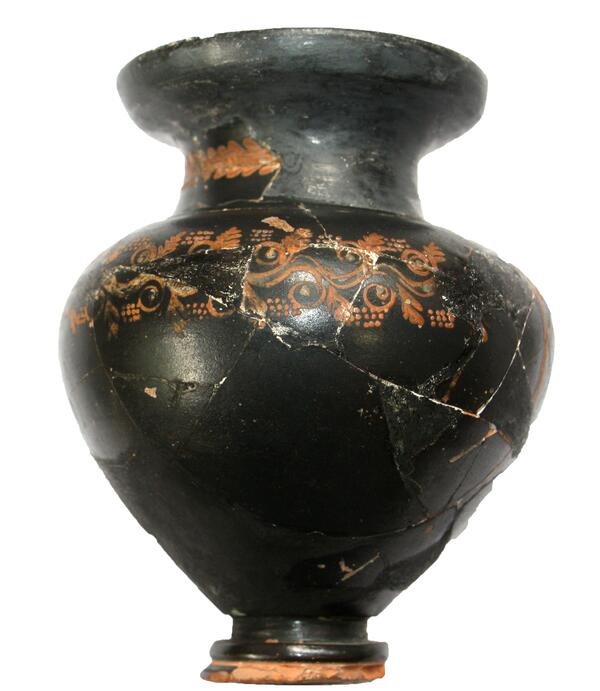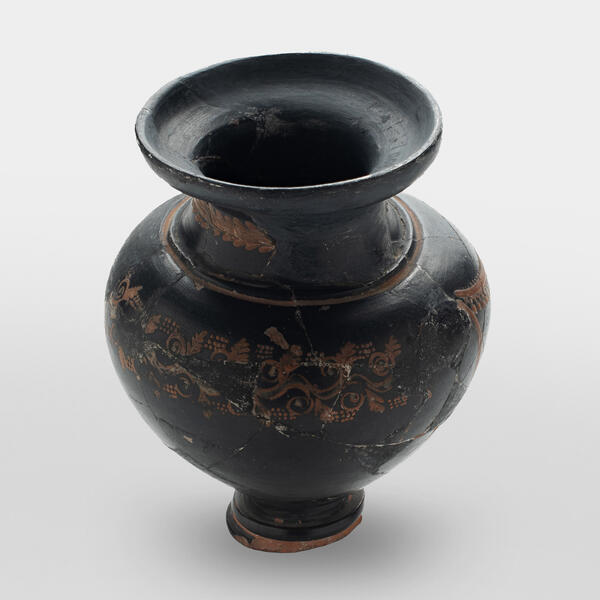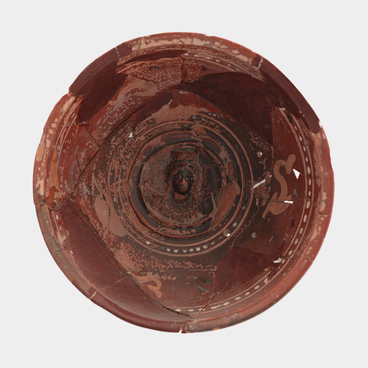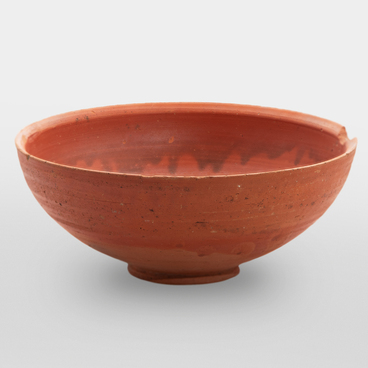The small vessel, which is believed by some researchers to be an oenochoe for storing oil, was discovered in 1989 during excavations in the basement of a Hellenistic building in the first quarter of the Tanais citadel. The complex, which also included two branded amphorae from Rhodes and Sinope, is essential for identifying the chronology of the early settlement. The oenochoe itself, with its overlay ornamental patterns in the West Slope style of the Athenian Agora, is the most significant artifact for dating.
The vessel has a narrow, low and cylindrical neck. The wide bell-shaped rim has a rounded edge. Where the neck meets the shoulders, there are two relief grooves that form a bead. The vessel has a pear-shaped body with smooth outlines. It flares towards the top. The low leg stands on a ring-shaped tray with an intricate design. The vessel is coated with a high-quality black lacquer. The orange clay is finely washed and is also of high quality. The vessel is decorated with clay of pale yellow and white shades. There is a decorative band on the neck in the form of a double stripe, with oblique ovals at the bottom and on top that imitate leaves. One of the grooves on the shoulder below is filled with yellow paint.
The décor on the widest part of the body is
composed of three sections. The widest one of them features two grape branches
with leaves in the center and volute-shaped curls that resemble a mustache.
Between the leaves, up and above them, there are rectangles composed of three
rows of four yellow dots, which represent clusters of grapes. Another section,
also wide, is made up of two narrow yellow stripes separated by a dotted
pattern. Above the upper stripe, there is a wide band of white clay with
pointed protrusions that ends in yellow curls and rings, resembling sea waves,
with dolphins jumping out of them. The third and longest section is represented
by a stripe with a dotted pattern applied on top. Below it, there is a wavy
line with hanging teardrop- or amphora-shaped leaves. At one end of this
section, bordered by a grapevine, there is a long ribbon of yellow clay that
extends downward. Perhaps, this three-part design represents land (vine), water
(sea with dolphins), and air (the horizon with drops).



